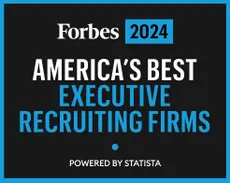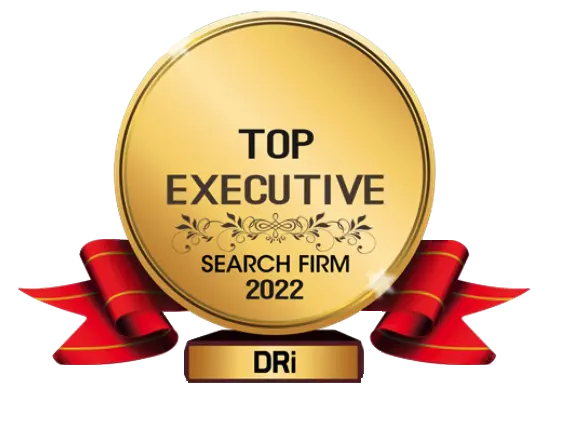We recently sat down with Curtis Young, who we helped place as Director of the Kansas Creative Arts Industries Commission, to learn about his work in the arts field, his new role, his experience working with the DRiWaterstone team, and his advice for other mission-driven executive candidates in today’s job market.
—
DRiWaterstone (DRiW): Can you tell me about the Kansas Creative Arts Industries Commission?
Curtis Young (CY): We’re the state arts agency. Every state has one, and every territory has one, so there are 50 of them across the country. All the state arts agencies were created in response to the creation of the National Endowment for the Arts, which was established a little over 50 years ago. They were created because it requires a state arts agency to receive any funds the federal government gives to the arts.
Here in Kansas, we are a small but mighty organization. We work to support, promote, and expand access to the arts across the entire stage. We do that in a number of different ways, and we have some initiatives going on right now. One that I’m particularly fond of is the Artist INC Initiative, which is a collaboration with the Mid-America Arts Association. They are the regional arts organization, and the program gives professional development training to professional artists to help them make a living from their art because we believe artists should get paid.
DRiW: Talk a little about your new role there and what you’re responsible for.
CY: I’m the agency director, which means I’m responsible for everything. I’m a theater person, and to put it in theater terms, I am the director and the stage manager. I work with our governing Commission, which is like a non-profit’s board. We have a small staff with two full-time employees and then a number of contractors spread across the state…I’m currently working with the staff to shore up our strategic plan, which we’re hoping to launch at the beginning of the year. I’m also responsible for ensuring that all these programs run how they need to and to help the people of Kansas.
DRiW: What attracted you to this position and the organization?
CY: My background is as a theater person. I’ve done just about everything. I’ve never been a designer, but I’ve been a stage manager and actor, and my major training is being a director. I sort of fell into arts administration by accident. I taught at college for a couple of years and discovered that I was a terrible college teacher.
I was lucky enough to find myself with the state arts agency of Florida, and I was there for nine years. I discovered that I have a real passion for the arts and artists and that I can make more of a difference (and change our society) as an arts administrator than I ever could as a practicing artist.
If I’m not serving my audience, then I don’t need to be doing it. This was the best way to serve my audience. I had moved up in the ranks in Florida, and it was time for me to spread my wings. And I knew I wanted to stay in state arts agencies.
DRiW: What projects or initiatives are you looking forward to executing?
CY: There are a couple of things that I’m looking forward to. The first is a symposium meeting coming up in Salina, Kansas. We are collaborating with the local arts agency there. It’s for local arts councils from around the state to come together and do professional development and networking. I’m really excited about that because it’s going to be a way for me to introduce myself and learn what’s going on across the state from people across the state.
I’m also really excited about the Artist INC program. I ran the professional development program in Florida, so that’s close to my heart. The amount of work that has been done is absolutely amazing. We have 5 workshops coming up this year. Plus, we have a session coming up in Wichita that will be once a week for months, and we’re doing another virtual weekend just for the artists on the Kansas touring artists roster. We’re looking at training over 100 artists with professional development skills just this year.
DRiW: Can you describe your experience working with the DRiWaterstone team as a candidate for this position?
CY: I was contacted by the agency, and honestly, at first, I just wasn’t interested. I wanted to stay in Florida or move to a big, exciting city. Then, after thinking about it and remembering how rural Kansas is, [I thought] it could be a good fit (I’m from rural Tennessee). The expansion of the arts locally is really important to me, so I got back in touch. I worked with the DRiWaterstone team, and I heard from them quite a lot. That kept me really kept me up-to-date with the process. They told me exactly what they needed from me and what was going on at all times. They completely supported me. I knew when I did have questions, they were there. They answered honestly and completely, and I never felt like anything was being held from me, which was great.
DRiW: How was your experience working with DRiWaterstone different from other firms you may have worked with/spoken to in the past?
CY: I had talked to other search firms when I was applying for a couple of other jobs. And the difference in the amount of support I got with DRiWaterstone was far above what I got. I always felt I had an idea of where I was in the process. At times with the other groups, I thought, “I don’t feel like I’m moving forward here,” and then three weeks later, I found out that I had moved forward and was completely shocked. I was always kept up-to-date with [DRiWaterstone], and I was never left out at sea like I was with some other firms.
DRiW: What advice do you have for non-profit or social impact executive candidates in today’s job market?
CY: I don’t know that I’m qualified to give advice, but I can tell you what is important, and it is what guided me to Kansas. When working for non-profits, it’s important to ensure that the places you’re interested in working for are ones whose missions are aligned with yours. I know that it can be very easy sometimes to think, okay, this is close to my interests, or this organization does a lot of good; I might not be passionate about that work, but I recognize how good they are. You’ve got to wait and hold out for the job that gets you out of bed in the morning and that lights your fire because we don’t work in non-profits to get rich, right? We do it because we think it needs to be done and because we think we’re good at it. Hold out for the job that really gets you going.
—
At DRiWaterstone, we have the pleasure of working with some of the best clients and candidates in the non-profit and social impact space. To learn more about how we can help you build high-performance teams and drive growth, email us – we’d love to talk!






